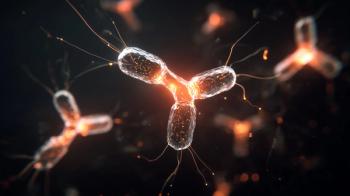
Study: How Individual Carbohydrate Responses Reveal Metabolic Health and Potential Biomarkers
Key Takeaways
- Individual blood glucose responses to carbohydrates vary significantly, influenced by metabolic conditions like insulin resistance and beta-cell dysfunction.
- The study involved 55 individuals, using continuous glucose monitors and multi-omics profiling to assess responses to standardized carbohydrate meals.
New research reveals how individual blood glucose responses to carbohydrates vary, highlighting the importance of personalized dietary approaches for diabetes management.
Individual blood glucose responses to carbohydrates vary significantly depending on a person’s metabolic health, according to study investigators from Stanford Medicine. The study authors, who published their findings in Nature, noted that the variations were linked to specific metabolic conditions, such as insulin resistance or beta-cell dysfunction, which are both signs of diabetes.1,2
High postprandial glycemic responses (PPGRs) are the fluctuations in glucose levels after a meal and are the body’s reaction to carbohydrates, which are closely related to beta cell function. These PPGRs are linked to prediabetes and are risk factors for type 2 diabetes (T2D). However, understanding glucose dysregulation in terms of PPGRs remains inadequate due to metabolic functions, such as insulin resistance and secretion, along with the labor and cost associated with the effects of incretin.1
To investigate individual PPGRs and their links to metabolic subtypes and omics profiles, the study authors studied responses to various standardized carbohydrate meals and to a mitigated rice meal in individuals with thoroughly profiled metabolic traits.1
“Right now, the American Diabetes Association dietary guidelines do not work that well because they lump everyone together. This study suggests that not only are there subtypes within prediabetes, but also that your subtype could determine the foods you should and should not eat,” said Michael Snyder, PhD, the Stanford W. Ascherman, MD, FACS, professor in genetics, said in a news release.2
A total of 55 individuals without a history of T2D were included in metabolic testing for insulin resistance and beta cell dysfunction, along with multi-omics profiling. The tests checked triglyceride levels, metabolites in plasma of the blood, measures of liver function, and gut microbiome data. After the tests were concluded, the researchers found that out of 55 individuals, 26 had prediabetes.2
The individuals were then instructed to wear continuous glucose monitors (CGMs) at home and consume the foods delivered to them, which included the same-sized portions for all participants. The foods tested included jasmine rice, butter bread, shredded potato, pasta, canned black beans, grapes, and a berry mix of blackberries, strawberries, and blueberries. Each of the carbohydrates was eaten by the individuals twice, first thing in the morning after a 10- to 12-hour fast. The investigators monitored the blood glucose responses during the 3 hours after the food was consumed.1.2
Individuals with insulin resistance experienced the highest blood glucose spikes after eating pasta, whereas potatoes caused the greatest spikes in those with either insulin resistance or beta cell dysfunction. Results from the multi-omics analysis showed that these potato-sensitive individuals also experienced elevated levels of triglycerides and fatty acids, consistent with insulin resistance. Conversely, beans triggered blood glucose spikes linked with histidine and keto metabolism, which indicated the body’s use of fat for energy, according to the study authors.1
Further results showed that individuals with elevated blood glucose after eating bread were more prone to hypertension. Notably, the differing blood glucose responses between potatoes and grapes were associated with insulin resistance, which could function as a future biomarker for the condition.1,2
“Such a biomarker would be useful because insulin resistance is amenable to lifestyle and medication interventions that can reduce risk for diabetes in high-risk individuals. At present, there is no easy way to diagnose it in the clinic,” Tracey McLaughlin, MD, professor of endocrinology and co-lead study author, said in a news release.2
The findings suggest that understanding these personalized blood glucose responses could aid more tailored prevention and treatment approaches for prediabetes and diabetes.1,2
“Eating carbohydrates later in a meal is still a good idea even though it has not yet been sorted out whether it is best to eat protein, fat, or fiber before carbohydrates," Snyder said in a news release. "Eat your salad or hamburger before your french fries."2
REFERENCES
1. Wu, Y., Ehlert, B., Metwally, A. A., Perelman, D., Park, H., Brooks, A. W., ... & Ræder, H. Individual variations in glycemic responses to carbohydrates and underlying metabolic physiology. Nature Medicine. June 4, 2025. Accessed June 12, 2025. doi: 10.1038/s41591-025-03719-2.
2. Blood sugar response to various carbohydrates can point to metabolic health subtypes, study finds. EurekAlert. News release. June 4, 2025. Accessed June 12, 2025. https://www.eurekalert.org/news-releases/1085535
Newsletter
Stay informed on drug updates, treatment guidelines, and pharmacy practice trends—subscribe to Pharmacy Times for weekly clinical insights.


















































































































































































































